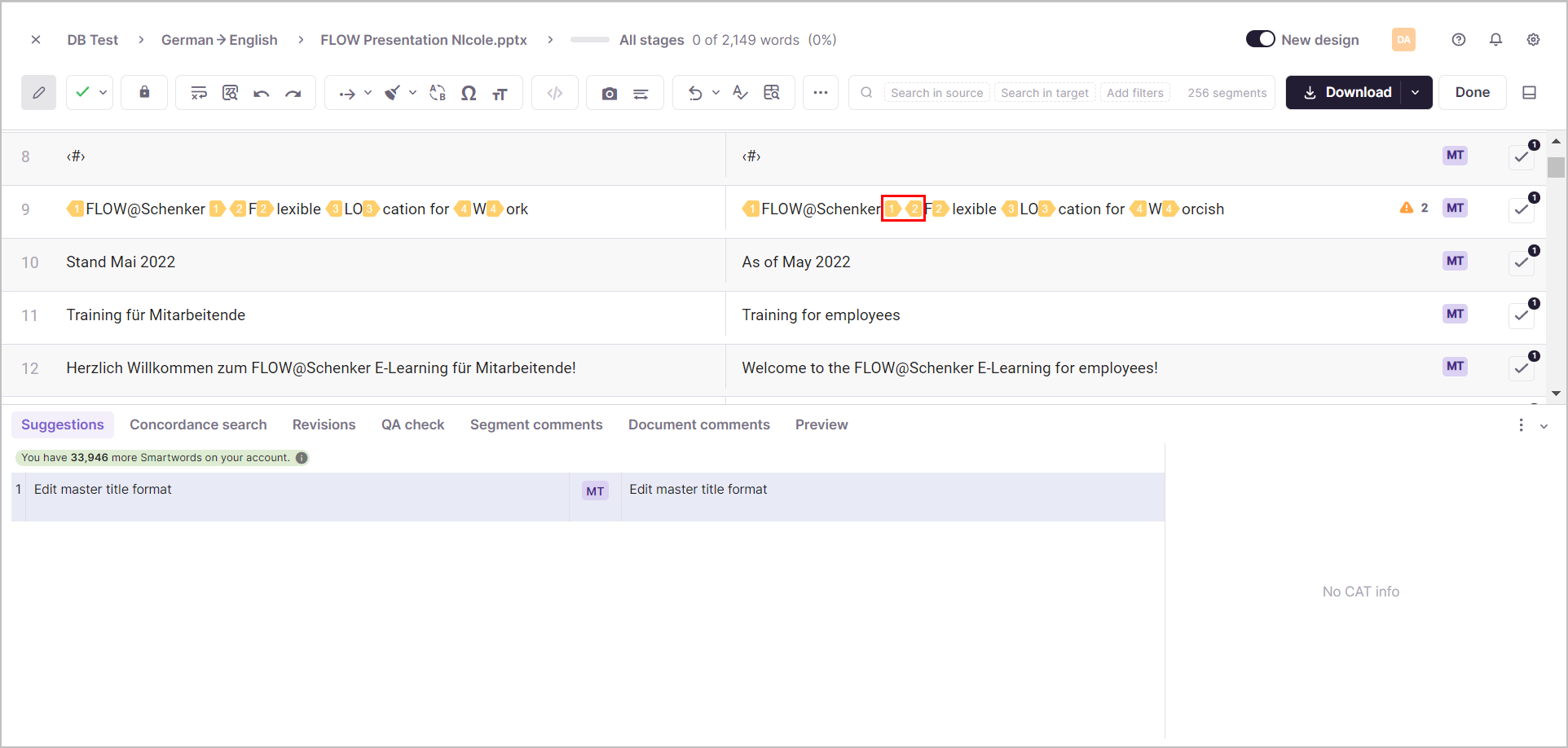Tags are used on the Smartcat platform to maintain the formatting or internal code – like index entries or cross-references – of your original document.
If the original file that you uploaded for translation contains any tags – such as markup, links, or formatting – they are transferred to the Smartcat Editor, the platform's CAT tool.
Automatically applied tags in translation segments
There are instances when Smartcat automatically creates tags for your translations to improve your workflow.
Here are the three primary types of automatic tag.
1. Segment copies
Automatic tags are generated when a segment is a repetition – an exact copy – of another segment that has already been translated within your translation project.
2. Automatic engine auto-tag support
Certain automatic translation engine support tag auto-insertion. For instance, Google Neural MT inserts its translated output into specific segments.
3. Context matches
A segment has a context match in a translation memory applied to the project, and the match is inserted.
The below image provides an example of what tags look like on the Smartcat Editor user interface: the five-sided orange shapes with numbers inside them.

Adding tags manually
Sometimes you may need to add or delete tags manually. You can also delete a tag in the same manner as any other symbol.
If the translation is missing a tag that is present in the source text you can add it quickly and easily yourself.
Follow these instructions to do so:
- Place the cursor in the translation text where you want to place a tag or select the target phrase with your cursor
2. Use the keyboard shortcut of Alt + tag number
Alternatively you can place the cursor in the translation where you need to put a tag or select the target phrase and click on the tag icon in the source text.
Note: If a segment contains multiple tags, they will be inserted in the same order as they appear in the source.